The Staudt Guilloché Chronograph, a Dutch Watch made with Jochen Benzinger
Yvo Staudt compares guilloché to an aria by Bach with emotions nestled between the lines.
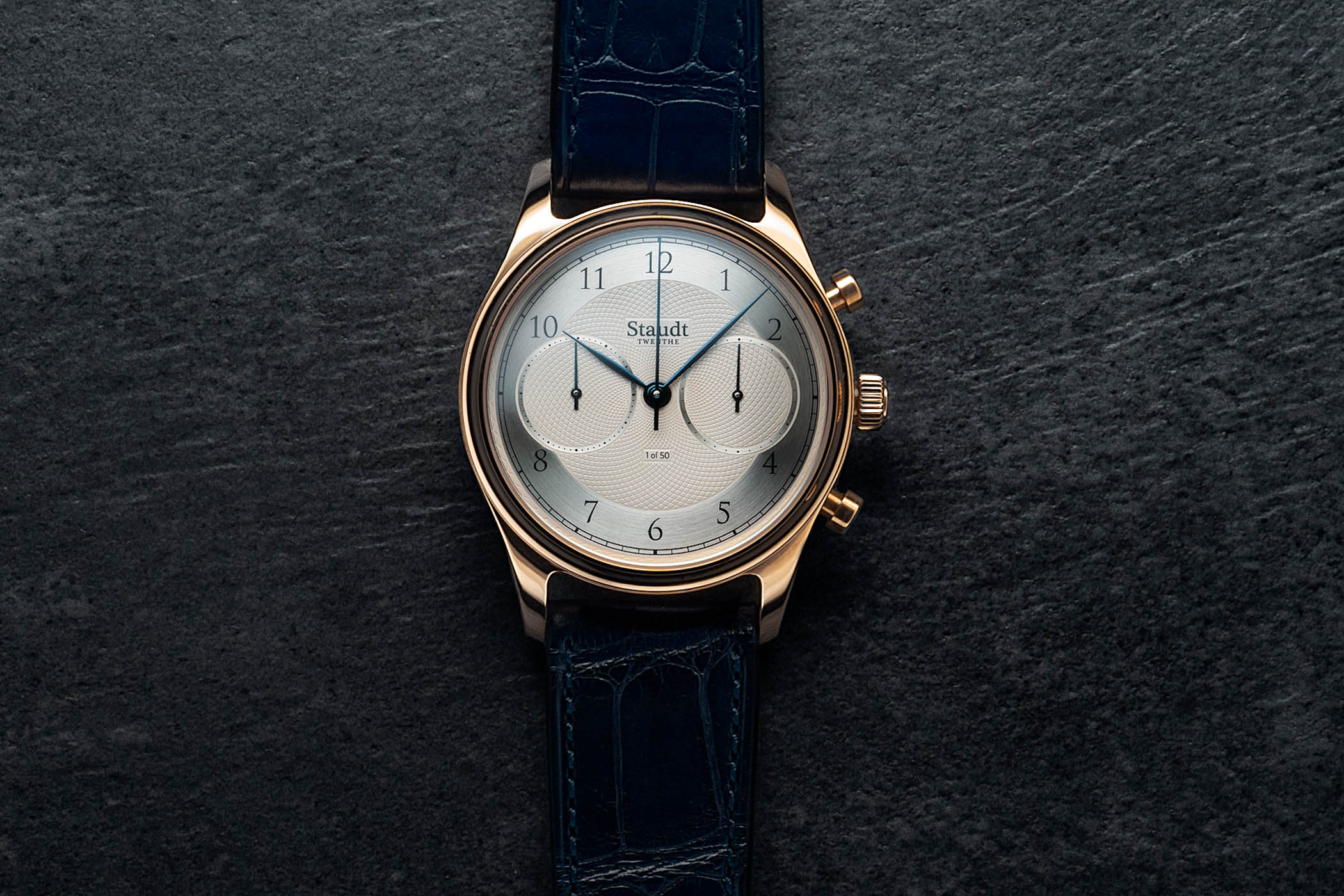
Staudt Watches is a rare and unexpected Dutch success story in the field of watchmaking. Here’s a young man, fresh out of the Conservatorio di Musica (music conservatory) in Pescara, Italy and now the owner of a watchmaking company. Who would have thought that his life would take this turn of events? Certainly not Yvo Staudt himself. Launching his first watch in 2016, this year marks the launch of the Staudt Guilloché Chronograph.
What started as a simple adventure of “if you want to do something right, you have to do it yourself” has turned into a proper brand in just five relatively short years. Following the inaugural Staudt Praeludium, a surprisingly refined hand-wound watch, Staudt Watches now come in three different sizes and a combination of hand-wound and automatic movements. The style is quintessentially classical, with subtle, well-proportioned dials.
With restrained designs, modest dimensions and the occasional frivolity here and there, the Staudt collection is certainly worth your time, and the new Staudt Guilloché Chronograph is no exception. It is not the first foray into the world of hand-engraved guilloché patterns, as Yvo Staudt presented a Praeludium Guilloché in a rose gold case in a now sold-out run of 25 pieces. While the chronograph is not new to Staudt, it is the first time it is combined with a hand-turned guilloché dial.
Guilloché decoration is executed with a rose engine lathe and is a centuries-old technique. Only a handful of people in the world can create a perfectly decorated dial, one of whom is Jochen Benzinger. With his expertise in guilloché decoration, Jochen has created a very refined dial yet again. Guilloché involves multiple steps, and even the tiniest miscalculation in the preparation can throw you off, having to discard a dial and start over.
Yvo Staudt created a video where he and Jochen Benzinger discuss the history, process and inspiration for the technique (see below). It is interesting to hear Jochen talk about the soul encapsulated within the lines of a properly done guilloché pattern. This resonates with Yvo as a musician, as it is comparable with playing a tune hundreds of times. Each time the result is a little bit different and thus has a soul. It’s not a perfect copy over and over again and minute changes give it character, which is the same in guilloché.
The Staudt Guilloché Chronograph comes in two versions: a steel case and a blue dial or a rose gold case with an ivory dial. The dial is decorated with a barleycorn pattern on the middle section and the two chronograph sub-dials. This decoration is applied with a cutting tool of only 0.2mm thick and a rosette with 72 waves and valleys on the rose engine lathe. The result is a very fine pattern in the middle that radiates outwards.
Surrounding the guilloché middle part and the sub-dials is a circular-brushed finishing with a minute track on the edge. Apart from the Staudt logo and the limitation, the final decoration is another guilloché pattern on the outside edge. The Staudt Guilloché Chronograph uses two leaf-shaped hands for the hours and minutes, accompanied by a slender central seconds hand and a pair of similarly shaped chronograph hands. The hands are polished steel over the blue dial or heat-blued steel over the frosted silver dial.
The case is 41mm in diameter and measures 13.6mm in height. The concave bezel adds flair to the case, as do the contrasting polished and brushed finishes. On the right-hand side of the case are two simple yet effective chronograph pushers, and the knurled crown is decorated with the Staudt-S. Flipping the watch over reveals the automatic chronograph movement.
The Valjoux 7753 is a workhorse of a movement. The construction is robust and reliable and performs well. It has 27 jewels and runs at a frequency of 28,800vph or 4Hz. Fully wound, assisted by the 18kt gold-plated rotor, the movement will keep running for 48 hours max. The movement is decorated with Côtes de Genève and perlage decorations.
The Staudt Guilloché Chronograph comes on an alligator leather strap in either deep blue or dark chocolate brown. A pin and buckle matching the case material secure it to your wrist. The rose gold version is limited to 50 pieces and costs EUR 17,989, while the steel version is limited to 100 pieces and costs EUR 5,989.
More information on Staudt-Twenthe.com.


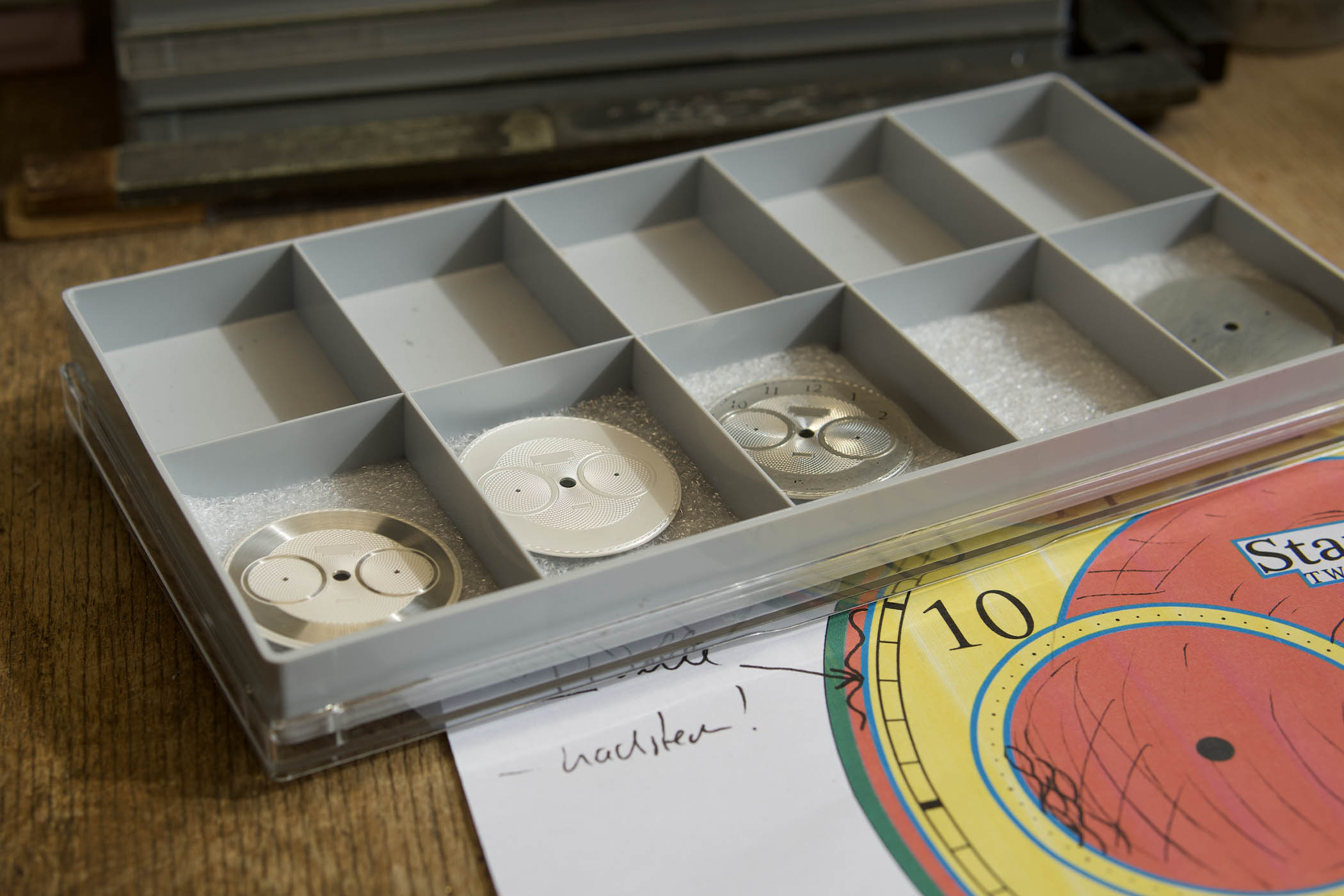
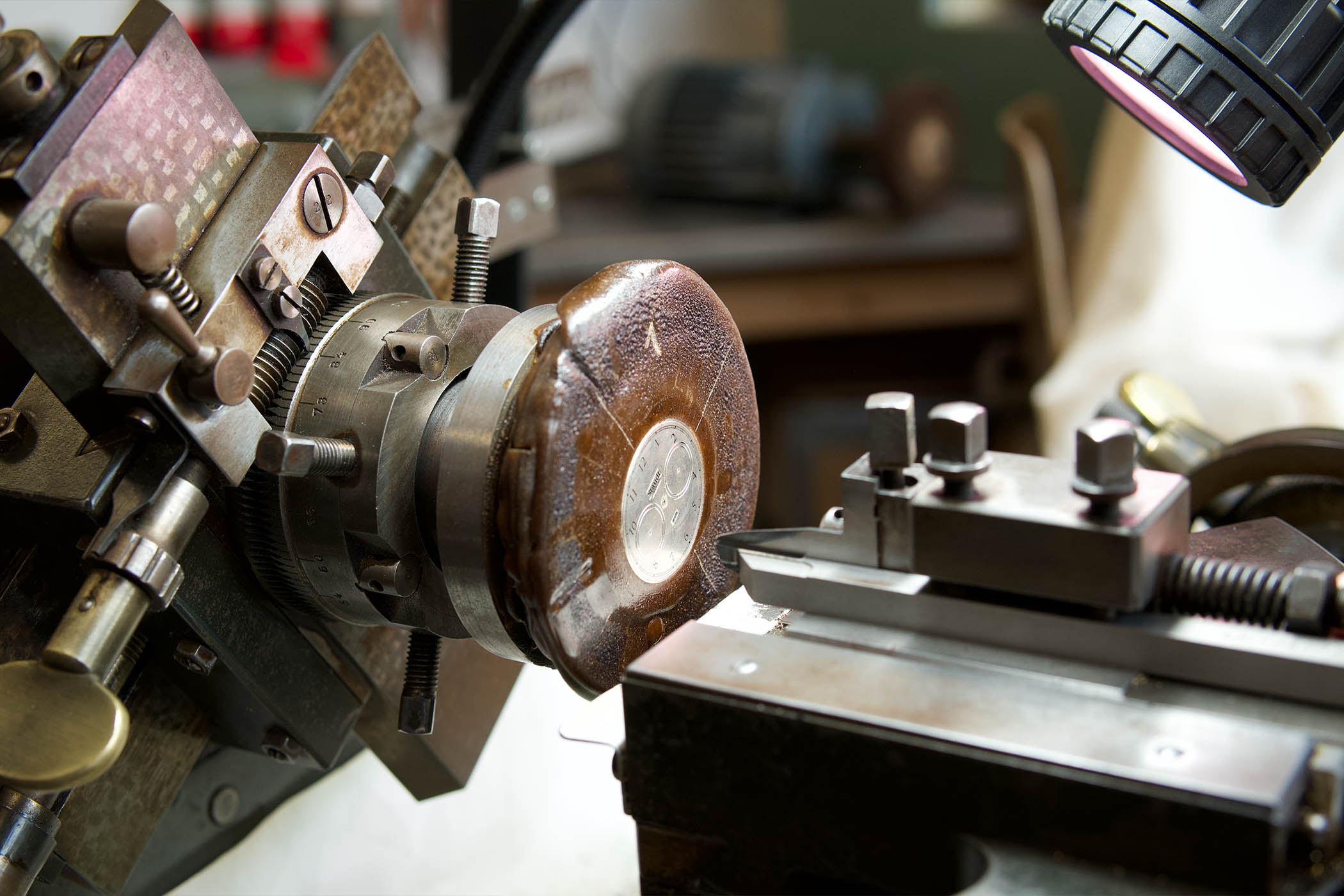
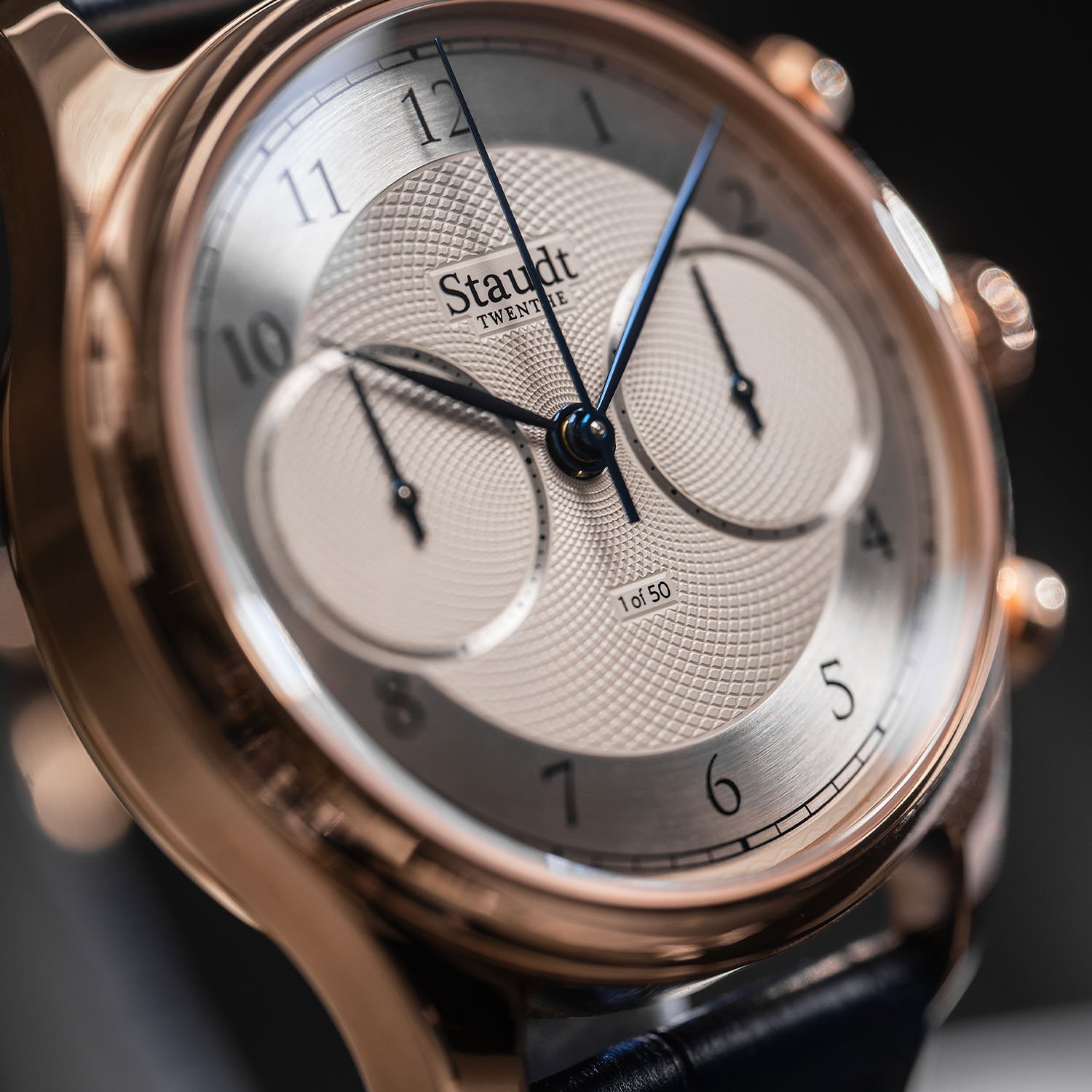
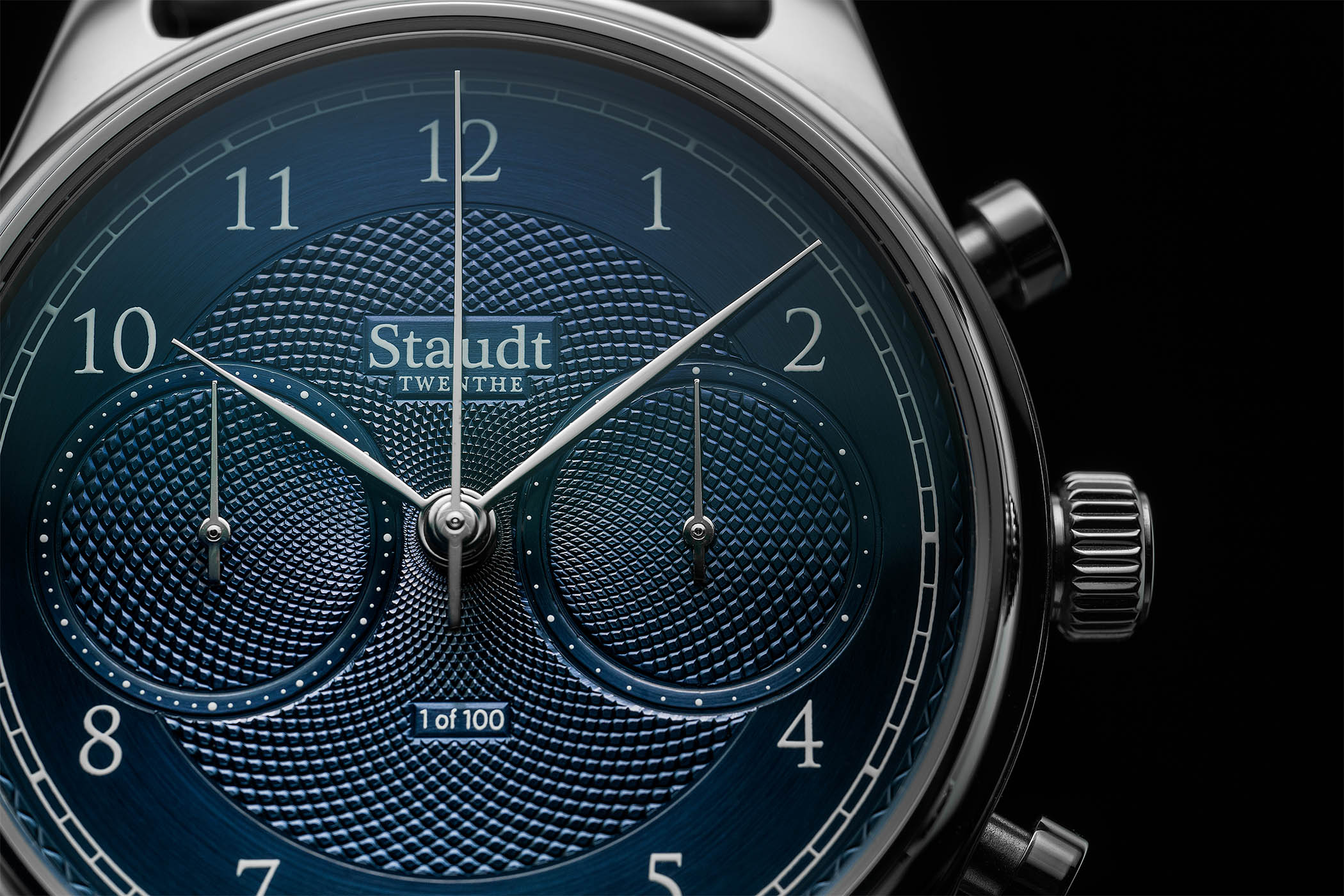
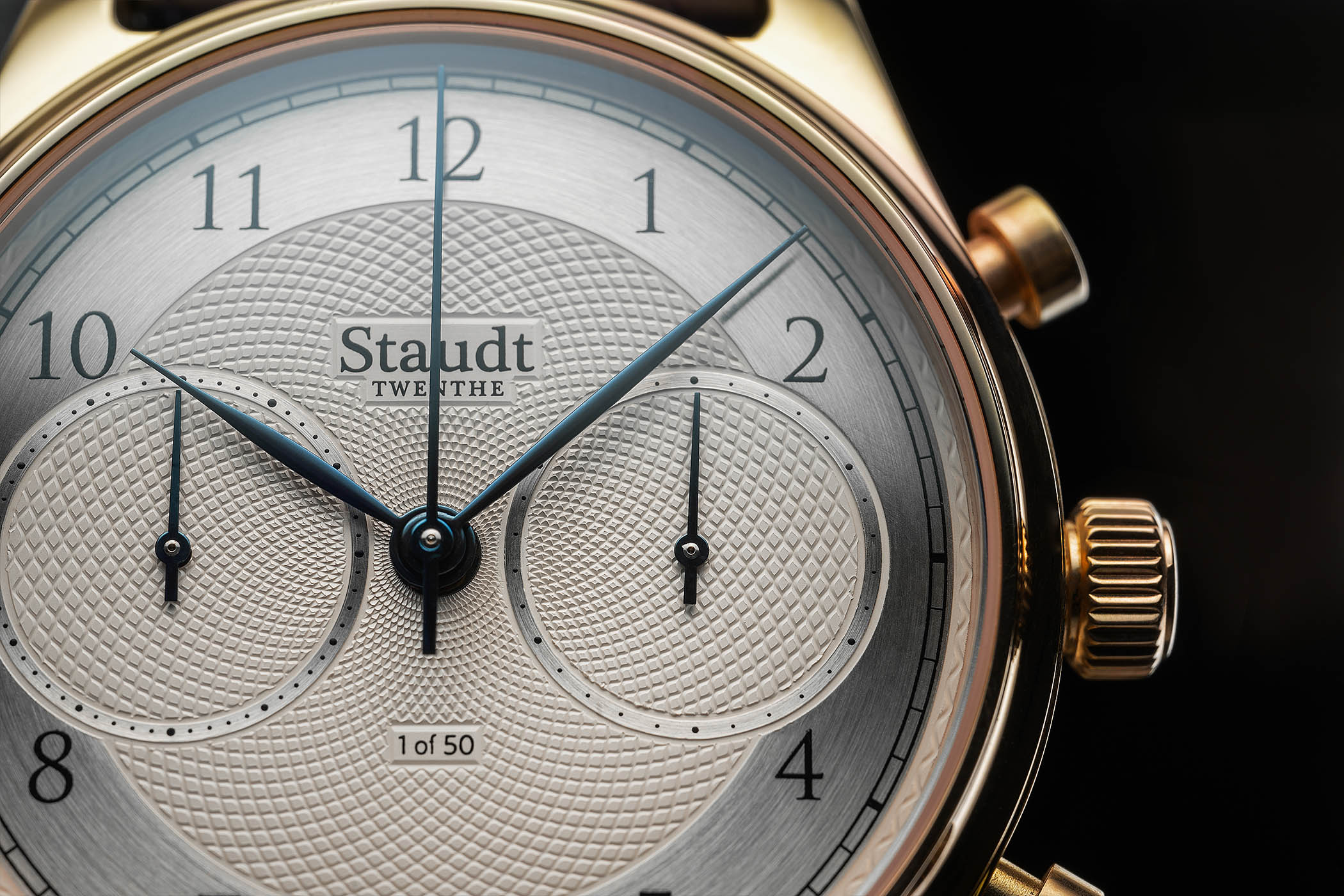
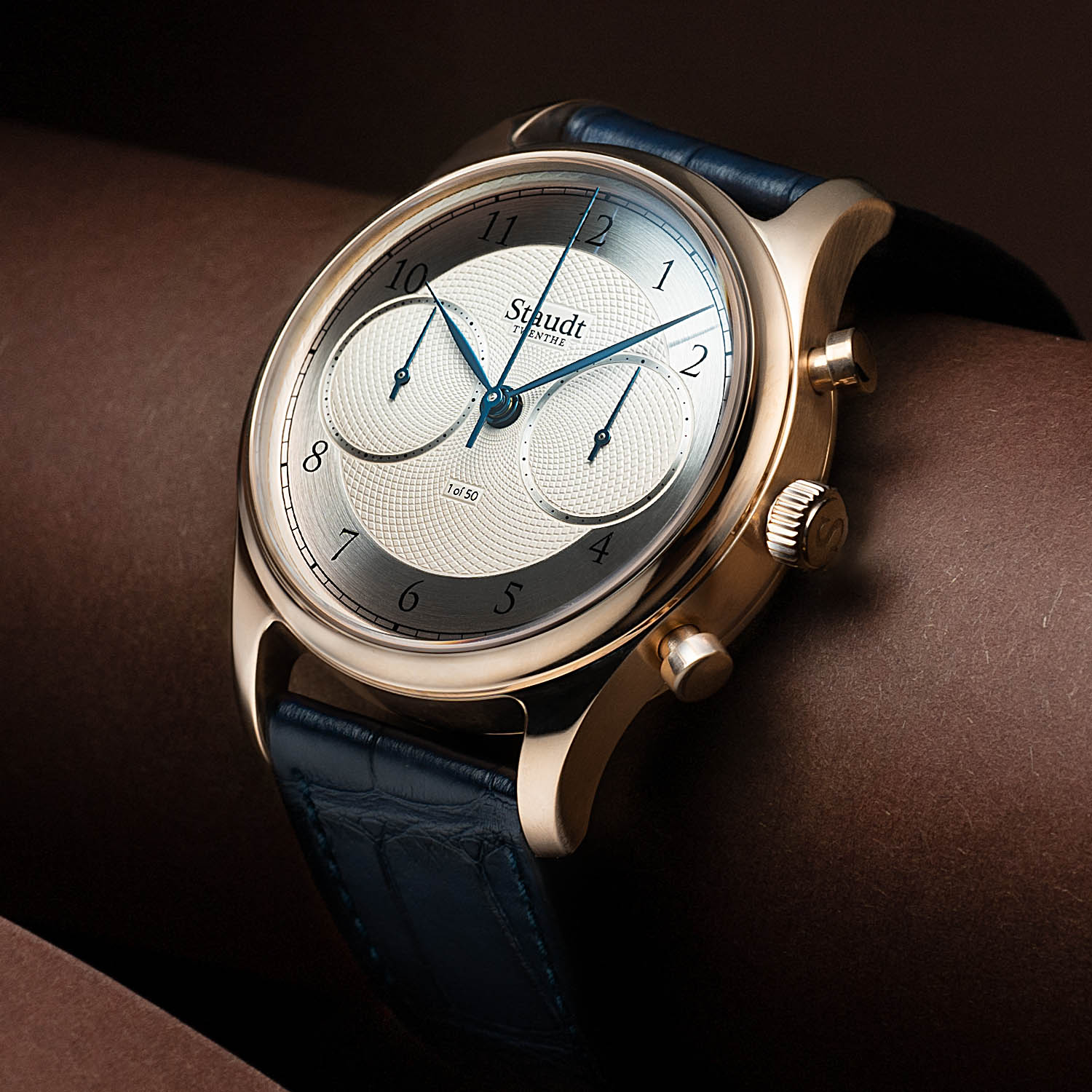
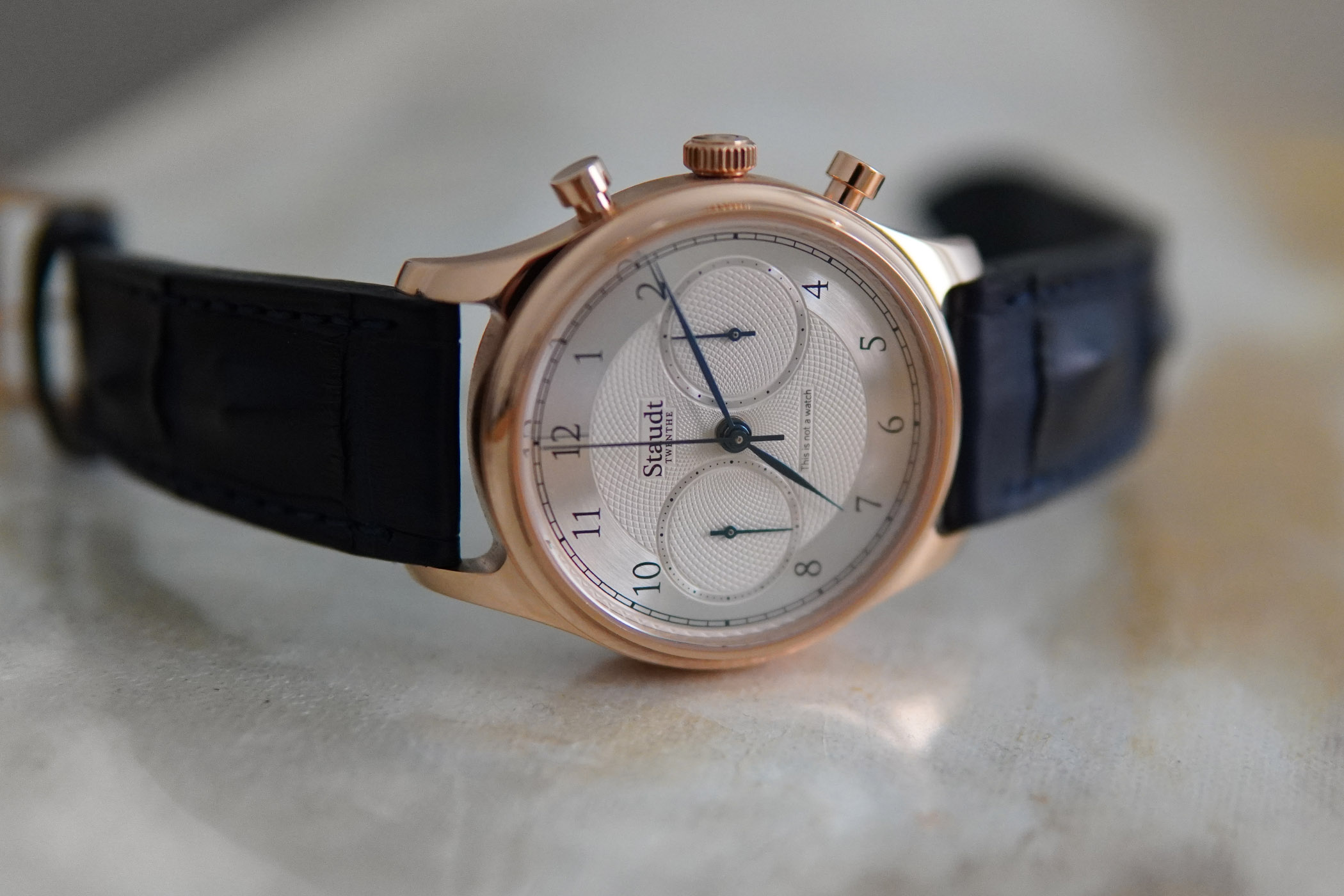
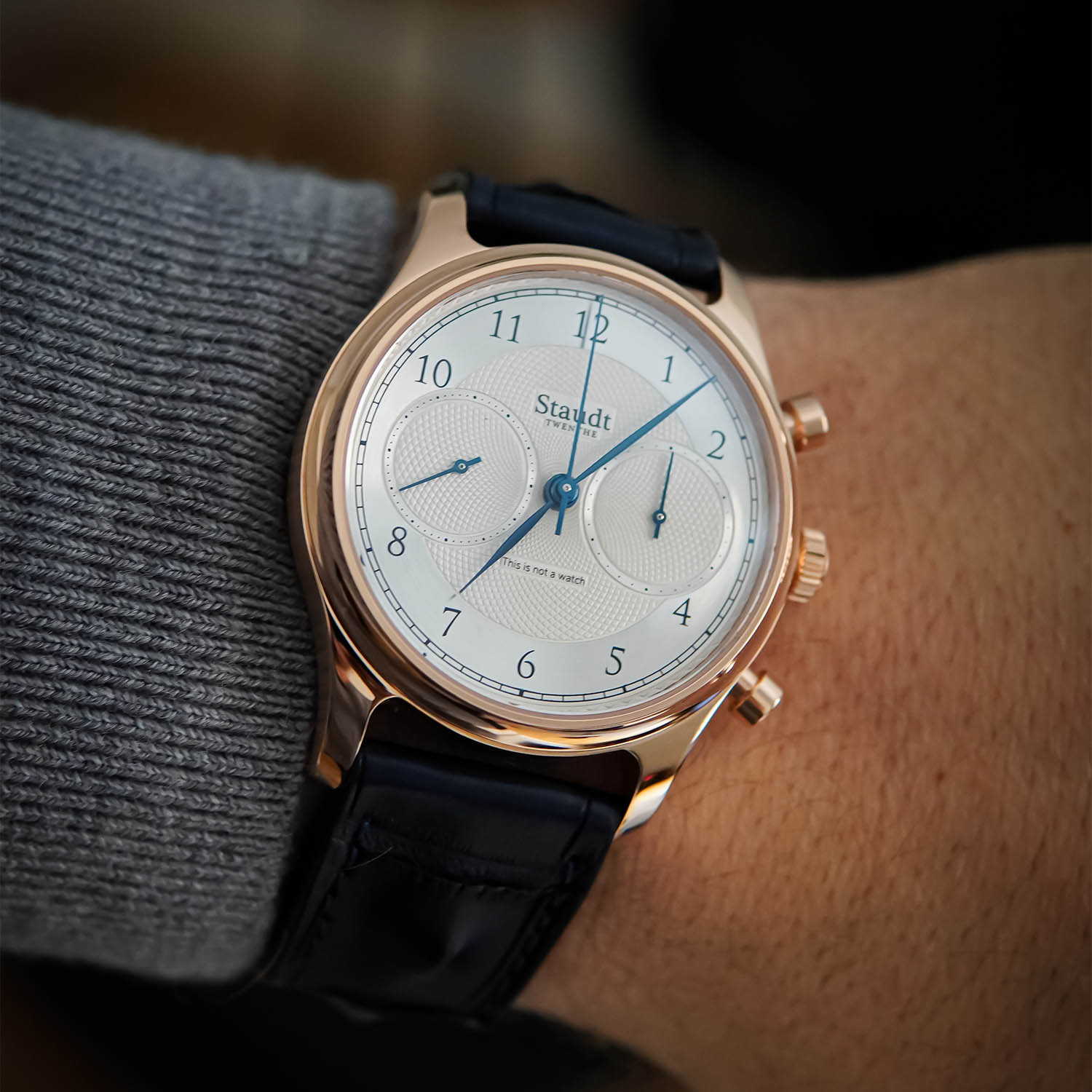




1 response
Not a bad thing per se but there is a strong czapek feel to it, even better without the date and the price is a bit steep but good luck to them!